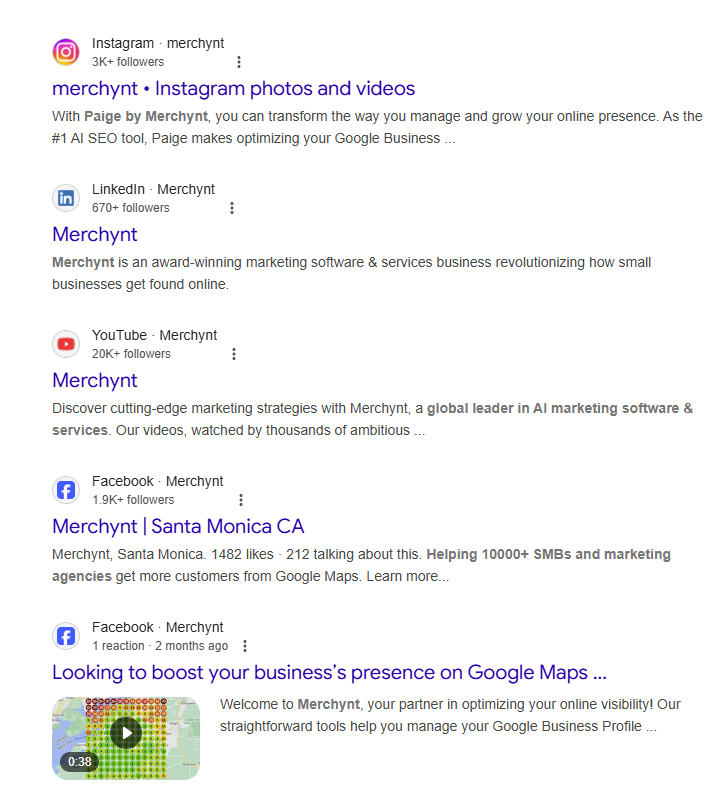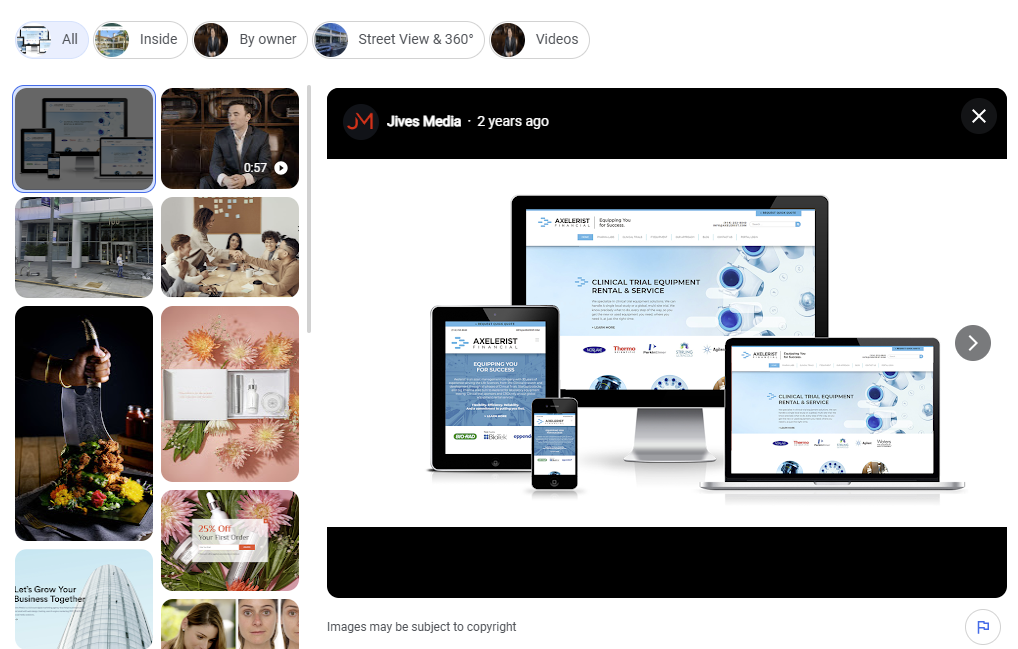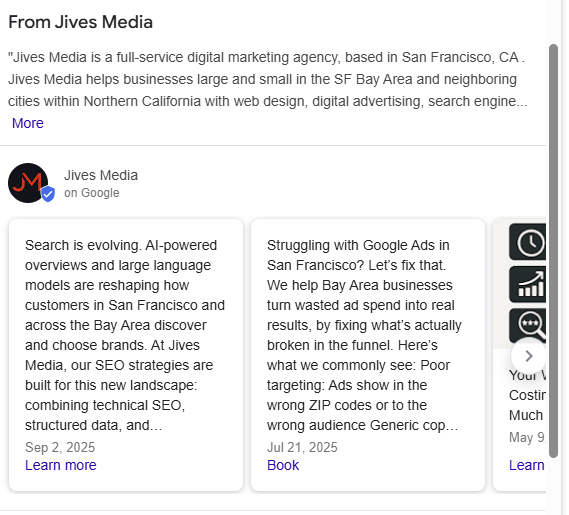.png)
Ranking higher on Google Maps is no longer optional for local businesses; it’s essential. Customers rely on Google Maps to find everything from restaurants to home services. If your business doesn’t appear near the top, you’re losing out on valuable leads. One powerful tool that can help businesses dominate local rankings is Paige by Merchynt.
Paige is an AI-powered assistant designed to optimize your Google Business Profile (GBP) with ease. It helps you create effective posts, track performance, and recommend strategies that directly improve your Google Maps visibility. Whether you’re a small local shop or a growing brand, Paige simplifies the complex world of local SEO, saving you time and delivering measurable results.
In this article, we’ve compiled insights from 15 experienced marketing agency owners who have shared their top strategies to climb higher in Google Maps rankings. By combining these expert tactics with tools like Paige, you can dramatically improve your online presence and attract more local customers.
Expert Insights: Proven Tactics to Rank Higher on Google Maps
Here’s what the experts had to say about the optimization tactics that helped them achieve higher local rankings and attract more customers.
Power of Reviews and Customer Feedback

- I improved our Google Maps ranking by modifying the way we received client feedback. After each campaign we had, within 24 hours, I would ask the clients to also try to include measurable outcomes, such as increased traffic or publications gained from the campaign. The change in timing created a 40% increase in our feedback rate in the first month. Over time, we also noticed that higher-quality reviews were better than vague reviews. We also wanted to be trustworthy, so we began to post pictures of our actual work site and program dashboards. In 8 weeks, we jumped from page two to the top three of our listing, proving that timing and authenticity are better than quantity.
Suvrangsou Das
Global PR Strategist & CEO, EasyPR LLC - For me, the biggest improvement came from asking every satisfied client to leave a quick Google review right after closing felt personal and authentic, not forced. Look, rankings can be stubborn, but consistent positive reviews from real homeowners soften the blow every single time. It took about two months before we noticed a steady uptick in both ranking and inbound calls from people finding us directly on Maps.
Carl Fanaro
President, NOLA Buys Houses
- One of the most effective steps we took was tightening up our local listings and making sure every detail was accurate across the board. At the same time, we put real effort into encouraging satisfied customers to share their experiences online, highlighting the specific flooring they purchased and the service they received. That combination of consistent business information and genuine, product-focused reviews gave our profile more authority and trust, which translated directly into stronger visibility on Google Maps.
Patrick Dinehart, CMO
ReallyCheapFloors.com
Optimized Listings and Accurate Business Information

- My Google My Business listing was optimized, which gave me a better ranking position on Google Maps. I ensured that I entered all the pertinent details and included quality pictures of my business. I motivated clients to make their reviews on Google, and this increased the level of interaction and ranking in the local search engine. It was about 2-3 months before I noticed that my Google Maps ranking position began to improve after I had taken these tactics. The trick is to keep your Google My Business listing updated with updated information and photos to ensure that you are ranked high at all times.
Jonathan Carcone, Principal
4 Brothers Buy Houses
- A frequent refresh and optimization of my business listing information greatly enhanced my ranking in Google Maps. This included adding the right information, such as my address, phone number, and website, which should be accurate, and appropriate keywords to the description. I also ensured that I post new pictures and address customer feedback swiftly. The findings were felt within weeks. My business was ranked more on local searches on Google Maps, and the calls and site visits to my business increased. One should keep in mind that the high ranking has to be achieved by having active work and new updates.
Keith Sant, Founder & CEO
Kind House Buyers
- The optimization process of the business listing using the relevant keywords, coupled with the use of the relevant business information, has greatly helped me change my ranking in the Google Maps ranking. These included the addition of geo-specific keywords in my listing title, description, and categories. It also entailed making sure that the contact details, including address and phone number, were fully consistent across all sites. The developments could be experienced within a few weeks once they have been implemented. I also noticed a higher number of views and emails of my listing, which later translated to an increase in foot traffic in my actual location.
Amanda New, Founder
Cash For Houses Girl
Uploading photos, videos, and user-generated visual content

- For local listings of game server hubs, the high-frequency uploads using geo-tagged user content tied to events ended up being our primary differentiation method. While most businesses update their profiles hardly ever, we constantly upload matchday snapshots, yielding metadata pointing to server performance locations. Within eight weeks, those uploads began to give us more visibility than competitors because Google Maps' newness and engagement multiplied, which upper cased static text. This explains that the advice here is that activity signals, such as user-generated photo content tagged to actual coordinates, will trump any sheer quantity of on-page keywords. That single trick raised our ma placements enough to generate quantifiable booking requests for local esports establishments. It also proved that gamification engagement beats passive profile updating.
Hone John Tito, Co-founder
Game Host Bros
- As the marketing manager of a customer merchandising company, I optimized our Google Maps ranking by adding recent images to our Google My Business profile (GMB). Recent photographs and videos helped establish brand authenticity. Google took this as a sign of active operations. The results of this strategy were evident after three months. Progress was slow. Customers were still uncertain about the location sometimes. After the second month, we added pictures of places near the business to further assist potential customers in locating the area. Deciding which images are best to add to a business's GMB profile was a combined effort of both the staff and consumers.
Aqsa Tabassam, Marketing Manager
The Monterey Company, Inc
- One of the simplest yet most powerful tactics I used to improve my Google Maps ranking was consistently uploading geo-tagged photos. I made it a habit to post behind-the-scenes shots of our tea inventory, packaging setup, or even the corner of my desk where I plan new blends; always from our physical business location. It's not rocket science, but it signals to Google that the listing is alive, local, and engaging. Within about four to six weeks, I noticed a bump, not just in views, but in real inquiries tied to "near me" searches. Turns out, Google likes signs of life. And apparently, so do customers.
Chris Lin, Founder
Summit Breeze Tea
Local Posting, Events & Community Engagement

- For our counselling clinics, embedding location-based blogs around each office genuinely moved the needle. I added Google Business Posts about community mental health events in Kelowna and Vernon, plus kept NAP details exactly the same across every directory. It took roughly six weeks before our posts started appearing for 'anxiety therapist near me' and similar local terms.
Amy Mosset, CEO
Interactive Counselling
- Optimizing our Google Business profile for phrases like 'we buy houses Columbus' made a huge impact on our local visibility. Whenever we closed a deal, I posted a short success update with a neighborhood mention and an authentic story of how we helped a seller. After about ten weeks, we dominated those search results for key investment terms. For real estate investors, steady local posting signals credibility to both Google and homeowners; you just have to keep it genuine.
Sean Grabow, Owner
Central City Solutions
- Since my background is in design and renovation, I started using Google Posts to share our specific vision for a property, sometimes even before we bought it, showing design mock-ups of what a dated kitchen or backyard could become. This demonstrated to sellers that we see the potential and value in their homes, not just the repair list. We saw a noticeable increase in calls from owners of outdated properties within about two months, as they felt we truly understood how to bring their home to its highest potential.
Nick Elo, Founder
Fast Vegas Home Buyers
Citations, Backlinks & Consistency Across Directories
- The most impactful tactic for improving our Google Maps rankings was aggressive citation building across more than 50 industry-relevant directories. We were skeptical until one client in the home services niche jumped 45% in Local Pack visibility within 12 weeks. Generally, you're in good shape with this approach as long as all name, address, and phone details stay fully consistent across directories.
Joe Davies, CEO
FATJOE
- From my experience with managing multi-location campaigns, I have found that it has a bigger effect than most understand is about adding service keywords to the primary category name. I updated one of my clients' listings from "Digital Marketing Agency" to "Digital Marketing Agency for Local Businesses," and their visibility in the target city improved within six weeks from position 18 to position 4. All because Google had more intent matching. I matched this with structured citations and made sure that every citation was consistent with the same NAP and keywords for the category. I tracked performance through Google Business Insights and through heat maps, and each citation where intent was in alignment with the category, resulted in up to 45% more calls than with standard citations. Review factors mattered less than citation context and relevance. While brands are still looking for backlinks, they are forgetting that Google Maps likes relevance and consistency. A minor text change
Rachita Chettri, Co-Founder and Media Expert
Linkible
- A neighborhood-level citation strategy transformed our Google Maps ranking. We built citations that mentioned micro-neighborhoods and specific streets alongside the city. Google started displaying our company in local searches within two weeks, increasing its visibility outside of the city results. This tactic attracted customers right where they live and significantly boosted foot traffic from local searches.
Nicolas Breedlove, CEO
PlaygroundEquipment.com
Bonus: AI, Automation & Data-Driven Optimization
- One surprisingly effective tactic I tested was applying AI clustering logic to local content creation. Instead of publishing random local posts, we used AI to identify search intent patterns and link each one strategically to our Maps listing. It hit me during an internal audit that engagement signalslike clicks from blog to Mapsactually boost local relevance. Within three and a half months, our ranked keywords doubled, improving visibility on both desktop and mobile. If you can, use AI insights not to replace content, but to organize it more intelligently around your business location.
Will Melton, CEO
Xponent21
- Drawing on my engineering background, I implemented a data-collection system by using a unique, trackable phone number exclusively for our Google Business Profile. This allowed us to analyze exactly which keywords and searches were driving calls, so we could double down on what was working in our Google Posts and services list. Seeing this focused activity and user engagement, Google boosted our rankings for those valuable keywords within about 8 weeks.
Casey Ryan, Founder
We Buy Any Vegas House
- One tactic that made a big difference for us was really dialing in our location keywords by adding neighborhood and town names into our Google Business Profile descriptions and posts. Instead of just saying 'Hudson Valley,' I included specific towns where we buy houses, like Poughkeepsie and Newburgh. Within a month or two, we noticed our listing showing up more often when homeowners searched for 'sell my house fast in [town],' which brought in more local calls.
Nicolas Martucci, Owner
Hudson Valley Cash Buyers
Conclusion: Take Action to Improve Your Local Rankings
Improving your Google Maps ranking is a continuous process that requires consistent effort. By following the proven strategies shared by experienced marketing professionals and using intelligent AI SEO tools like Paige by Merchynt, you can achieve top rankings, attract more local customers, and grow your business. Start optimizing today and secure your spot in the local search results.
Readers also liked:
The No Bullsh*t Guide To Ranking Higher on Google Maps in 2025
How to Master Google Maps Marketing Fast by Using Pro Tips
How to Boost Your Local Visibility with Google Map SEO Services
About Author

